Data on previous engagement...Say what?
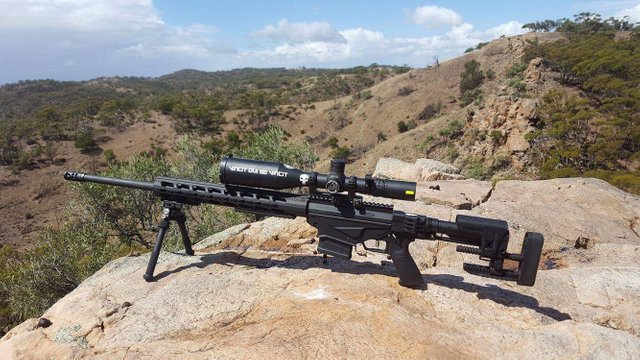
I had a conversation with a guy today who thought he would school me about the art of long range shooting. His definition of long range shooting was about 400-500 meters. He was quite passionate about his "long range" shooting and about schooling me apparently. The conversation was one-sided really, I just let him talk. He didn't really take the time to understand what my skill level was in respect of shooting and I didn't tell him. It seemed rude considering his passion.
I know a thing or two about the topic though. I shoot long rage practical competitions around the country. Ranges from about 200m to 1600m and more. I came home somewhat amused after my coversation with the guy tonight and thought I'd write a post about some of the tools I use for my sport. More specifically my ballistics calculator.
So, I use the Applied Ballistics product which is an App that loads right to my smart phone and tablet. (I use both depending on the situation.) Essentially it takes all the parameters and brings them together to give the shooter an accurate field firing solution (FFS) which the shooter inputs to the rifle scope and then pulls the trigger. That's it in a nutshell guess.
Prior to being able to use it though it has to be set up. Below is a list of items one must input to "set up" the calculator. This must be done for each rifle and each particular ammunition one is going to shoot from each rifle. The information below relates to one of my firearms and the ammunition I use in it.
Firearm data to input
Barrel twist rate: 1 in 8
Twist direction: Right
Sight height: 2.701 (in)
Sight offset: 0.0 (in)
Reticle: SKMR3
First focal plane: Yes
Elevation unit: Mils
Elevation turret graduation 1/10
Windage unit: Mils
Windage turret graduation: 1/10
Lead unit: Mils
Elevation correction factor: 1.0
Windage correction factor: 1.0
Ammunition Data to input
Bullet diameter: 0.264(in)
Bullet weight: 142.0(gr)
Bullet length: 1.374(in)
Muzzle velocity (MV): 2850fps (feet/second)
Atmosphere standard: ICAO
Drag model: G7
Ballistic Coeficient: 0.301
Aero range: 100m
One get's the muzzle velocity (MV) from using a chronograph to meaure the average speed (over five rounds) that the bullet exits the muzzle and most of the other data is obtained by measurment or from manufacturers specifications. It's a lot of information right?
Once that is set up you're ready to shoot. Well, not really. You need to take a look at the shot you're trying to make. Let's say 1000m. (1 kilometer)
One must read the wind correctly from trees, grass, hair blowing on a persons head down range and mirage just to name a few methods. Wind meters can be used too. I use a Kestrel 5700 elite personally, although I read the wind manually. The 5700 gives me other environmentals such as altitude, temperature and humidity all packaged up in one measurement called density altitude. The density altitude (DA) tells me that the shot I am about to make will be made in environmental conditions equivalent to a certain altitude above sea level. Let's say 590m. The closer to sea level a shot is taken the more elevation I would need to input due to the air being more dense. At altitude I would use less elevation for the same shot (distance) as the atmosphere is thinner or less-dense and therfore effects the flight of the bullet less. Make sense?
Once I have that all sorted I can input the wind I have estimated. I am able to estimate the wind to plus/minus 1mph so reasonably accurately. (I get it wrong sometimes though). Once I have inserted that I need to input the latitude (where I am on the planet) and the azimuth (what direction of the compas I am shooting at) and then I am given the FFS (Field firing solution). At long range the turning of the earth matters as the buklet leave the earth when in flight. If the earth is turning to the left for instance it can take the target out of the path of the bullet. The time of flight can be a long time.
Below is a screen capture off my phone showing the FFS. Note I have put 1000m as the range and a 7mph wind blowing from 3 o'clock. The result is 9.0mils of elevation (90 clicks) and 1.3mils of windage right (13 clicks). By clicking this into the adjustable turrets and aiming at the cross hairs I will hit the target provided I do the physical things required to shoot well. (Keeping the rifle perfectly level, correct grip, loading of bipod, breathing and trigger pull.) On the bottom left of the below image you'll see time of flight (TOF) as 1.601 seconds, the velocity (speed) and energy with which the bullet will impact the target. At the top right of the image you'll see the muzzle velocity and coriolis detail. (turning of the earth). You will also see the words "spin drift" which is the effect of the atmosphere on the bullet as if flies through the air. It actually flies slightly up and to the right (due to the right twist on my rifle barrel) which means the left of the bullet catches more atmosphere (greater surface area) pushing the bullet right. This get's calculated into the whole equation to present the correct FFS to me.
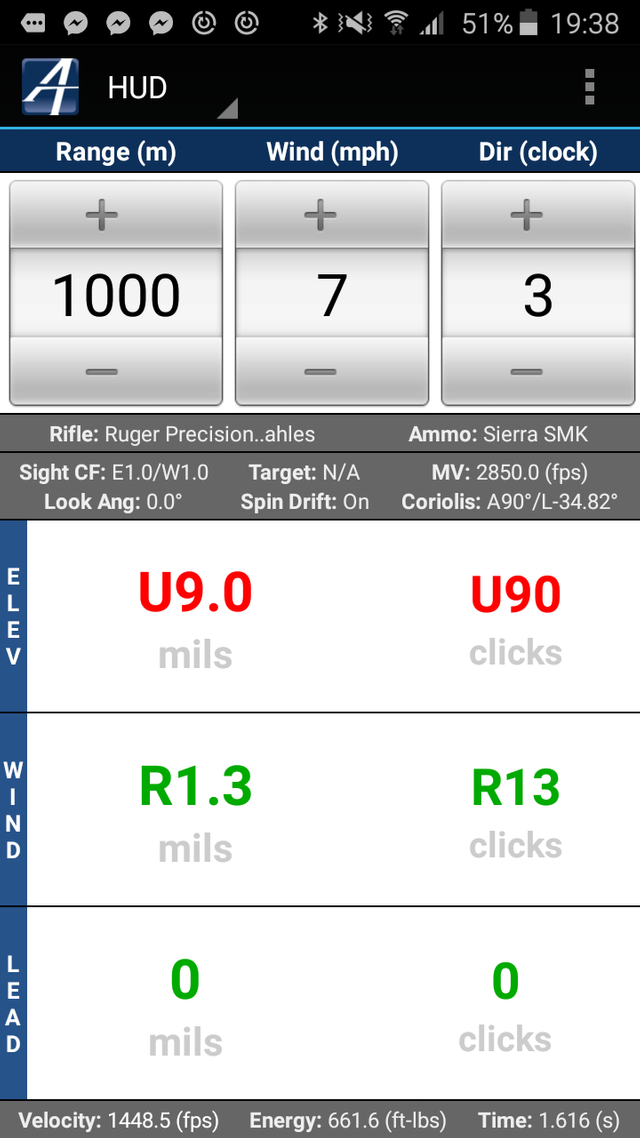
Here's another image with a different distance. Note that the elevation and windage adjustment required is less? That's because the distiance is closer.
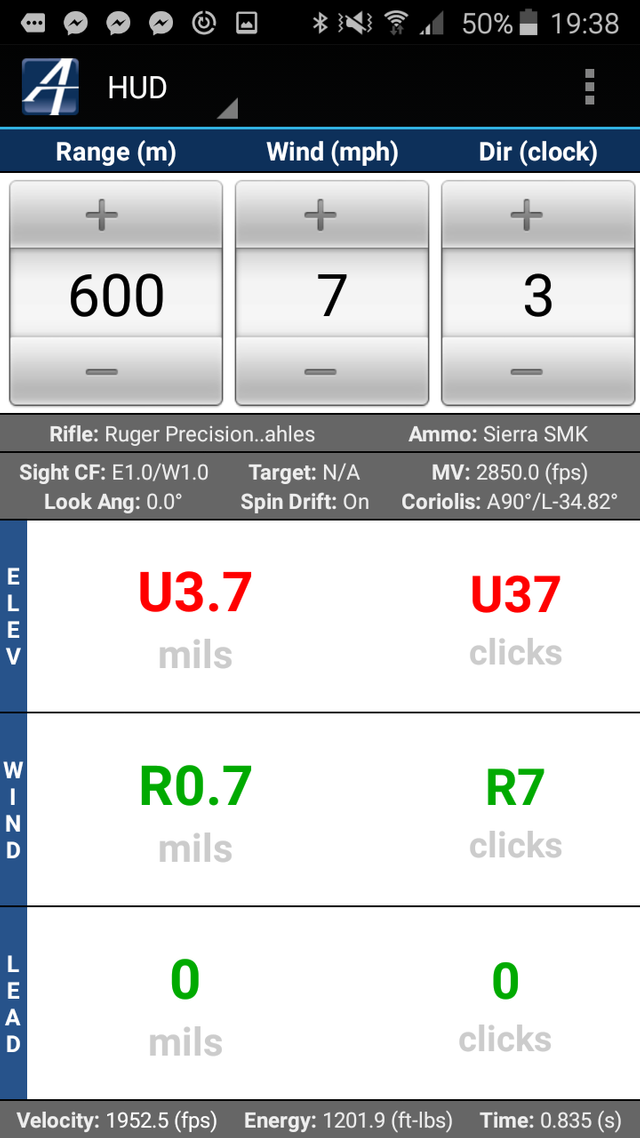
There's a great deal to it and I have tried to make it as simple to follow as possible. So, all of these things, and lot's more, get factored into the shot. Can you imagine a military sniper having to make rapid shots at different angles, distances and points of the compass? That's what my competitions are like. They make it as complicated as possible and all under stress like time, odd positions, running, movement and so on.
To make things a little easier a long range shooter will create DOPE cards for each rifle and each ammunition used. DOPE means data on previous engagement and provides a quick reference to allow multiple shots rapidly.
Here's an image of trajectory data that I would create a DOPE card from.
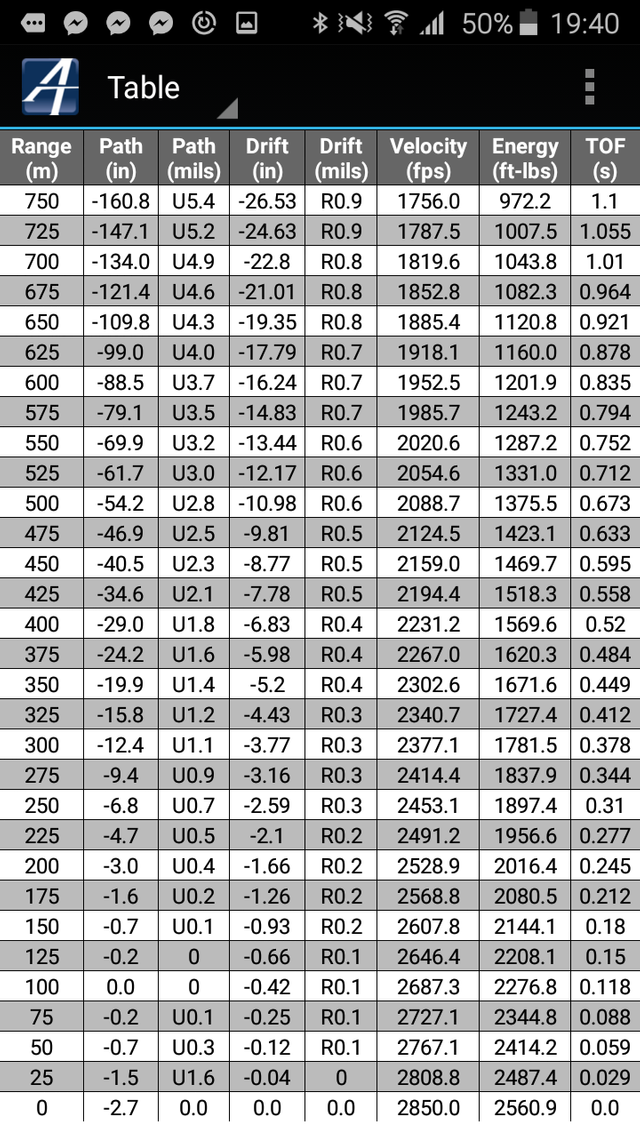
And here's an actual DOPE card. The green box is the DA (density altitude) reading at which each column was calculated (0/500/1000), E is elevation dial and W is the windage. I always make my DOPE cards up with 10mph wind full value (i.e. from 9 or 3 o'clock) Full value relates to wind having the most effect on a bullet at those two angles. I then calculate the windage dial differently in my head if it's from say 4 o'clock etc.)
Note at the bottom of the card at 1200m zero (0) DA the elevation dial is 46.75 and at 1000DA it's 43.00? That's because at 1000m DA the atmosphere is less-dense and has less of an affect on the bullet. A note on this DOPE card. It is created in MOA not MILS so the dial inputs are different. It's just a different measurment. I only shoot Mils now.
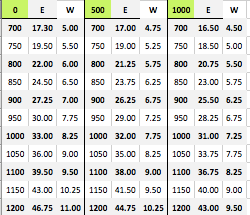
So, if you managed to get this far you may consider yourself a little more understanding of what it takes to make a long range shot.
And the guy today? Well, his way of doing it was...And I quote, "aiming higher above the target". Now, I admit that it is possible. We all do it when hunting. However there are many factors that go into shooting accurately over long distances. It's a science. In a military or competition scenario there's no second chance. I think I did well not to get involved in a conversation with him about it and keeping quiet on my own skills. I just didn't want to make him feel I was chalenging him.
So, thanks for reading if you got this far.
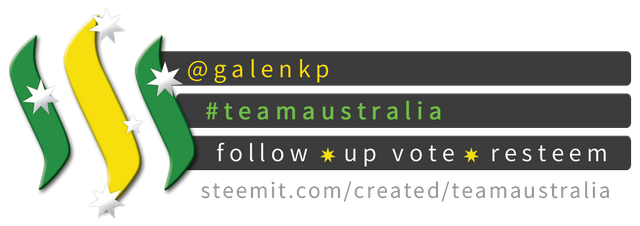
Fascinating! I think it's great that you are debunking the "Hollywood myth"that it is so easy to accurately shoot a rifle, especially at long distances. It truly is a very complicated science.
Yeah, it really is. I was completely confused when I started doing it initially. I think, most of the time, people think it's a point and shoot scenario when the reality is that many many things have to come together to make it all happen. That is, of course if one is shooting for accuracy.
It's funny, I was at my club shooting some pistols the other day (competing) and people were missing adult-torso-sized targets at 7 meters all because a clock was timing them. Can you imagine being under real pressure? They'd hit nothing, ever.
The TV shows us how easy shooting is but the reality is far from the Hollywood version.
I write these posts to show people that people with guns are normal people doing a sport, a hobby rather than being a stereotypical gun-toting redneck.
Thanks for your comment @swenger. Much appreciated.
His "long range shooting".....LMFAO.
We almost never even doped the scope until 600m, extreme wind aside, just mildot holds. But I'm slack these days.
Kind of like the hunter guys that talk about the amazing shots they made....as they describe how many "feet" away the target was. SMH
There was a time when I was interested in long range black powder cartridge shooting, but the cost of everything has kept me from doing that.
Funny you should say that. I fired my forest even black powder pistol last weekend. What great fun! Involved process though. You wouldn't want more than 6 people running at you at any given point! I wonder what sort of accuracy a black powder rifle would have over longer distances. Apparently most of the problem with shooting off the firing line with black powder rifles was seeing the enemy through all the smoke!
From what I understand, the black powder cartridge competition shooting is done with vintage type single shot rifles, usually in large bore calibers, typically 40 caliber or larger. When I was reading a lot about it, the 45-70 and 45-90 were two of the most popular calibers. There were a fair amount of people who competed with 40 caliber rifles also. The most popular types of rifles were the Sharps type and the rolling block type actions, with several other types being used as well. I haven't kept up with it for the last year or 2.
Picked up some here, Thanks!
:)>Most welcome.
I will watch the rest, I love learning new things. I will send these links to my Son too....
:)>Cool...Please explain that I have written them in a simplistic way...I can get way more complicated, but don't want to for steem. That book I sent in the image a few comments ago is complicated, heavy going and absolute gold. Did you get it?
Accuracy and Precision for long range shooting - Bryan Litz.
I ordered it in hardback, so it wouldn't tear up. Complicated sounds good!
I will tell him, but he is a pretty smart Man.
>:)>:)
Hd dropped off my granddog this morning, so running on 3 hours of sleep....
:)>3 hours? Jeez, I'd be a grumpy old bear all day!